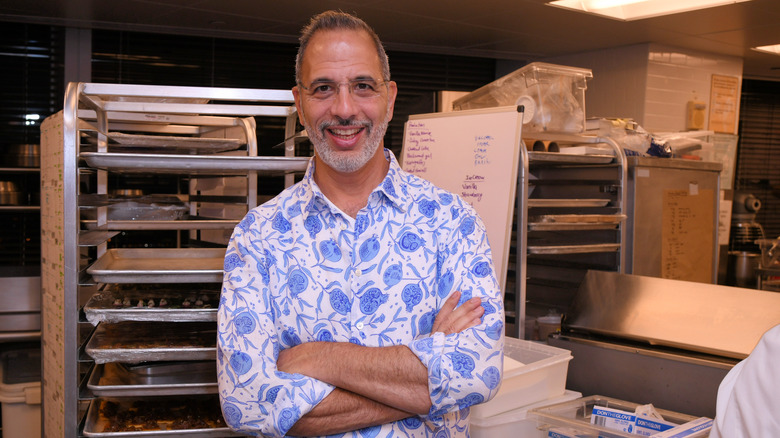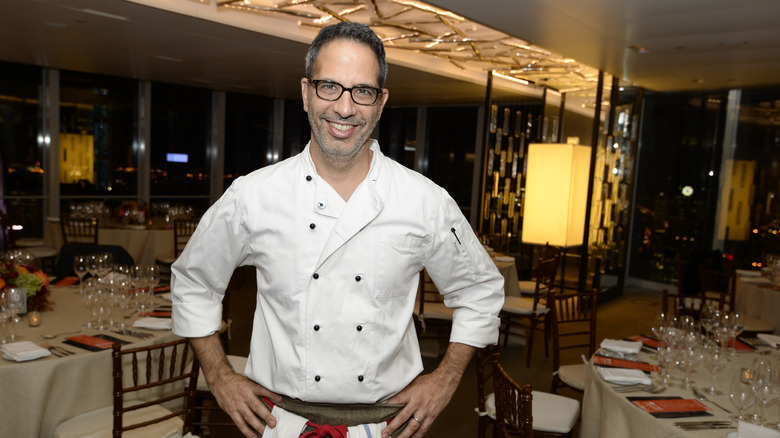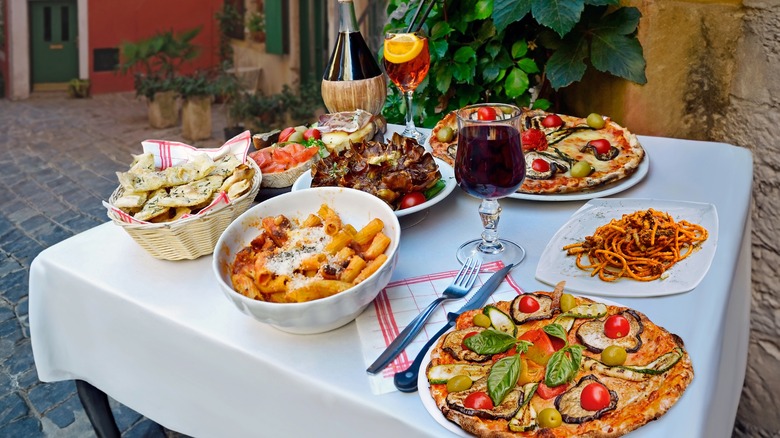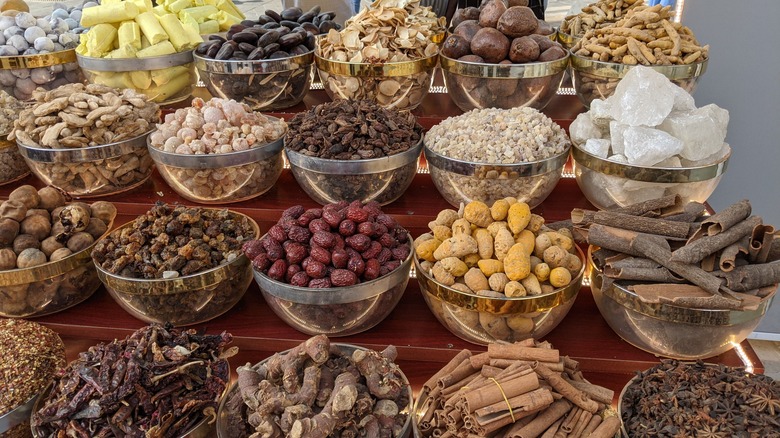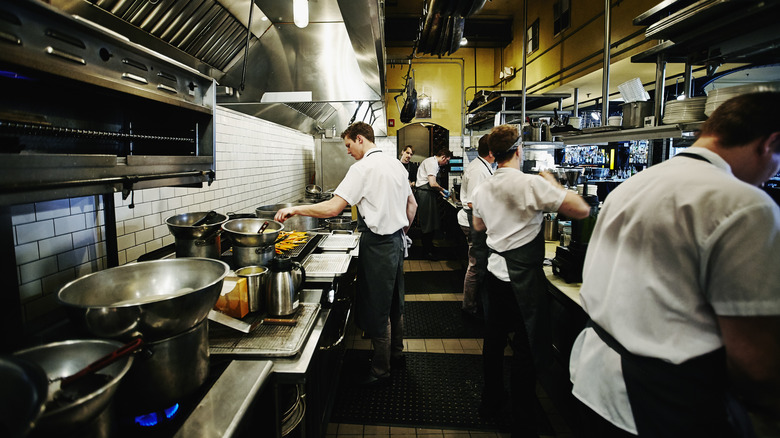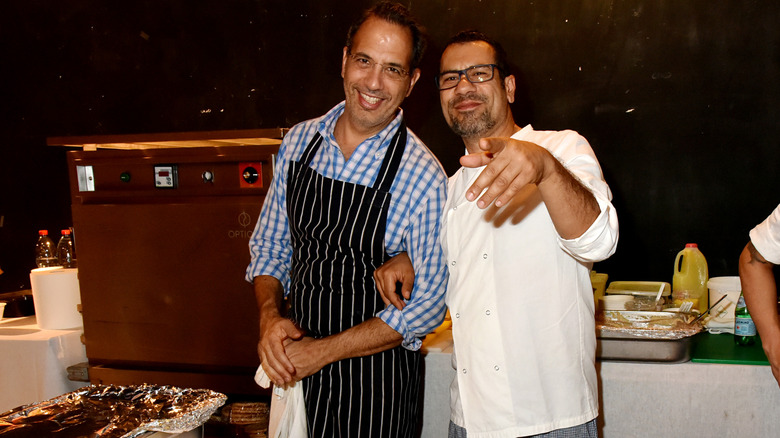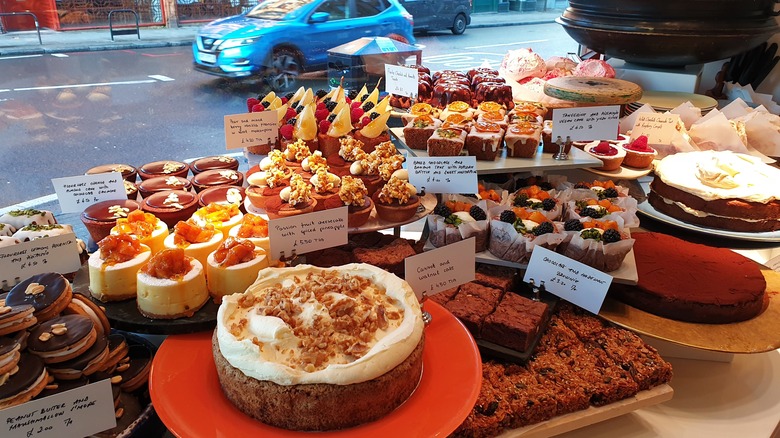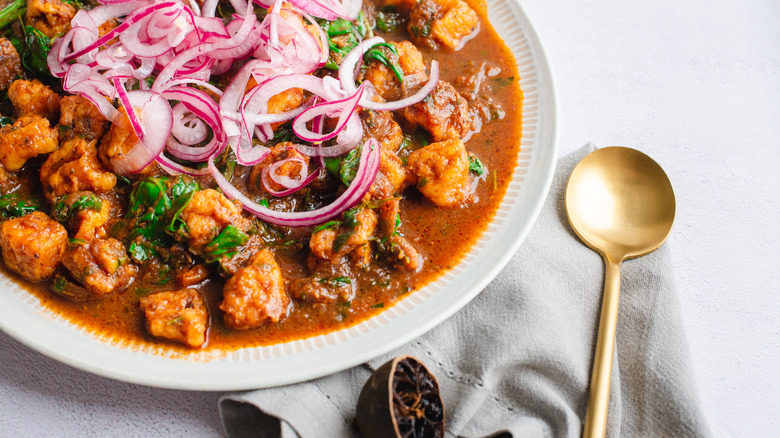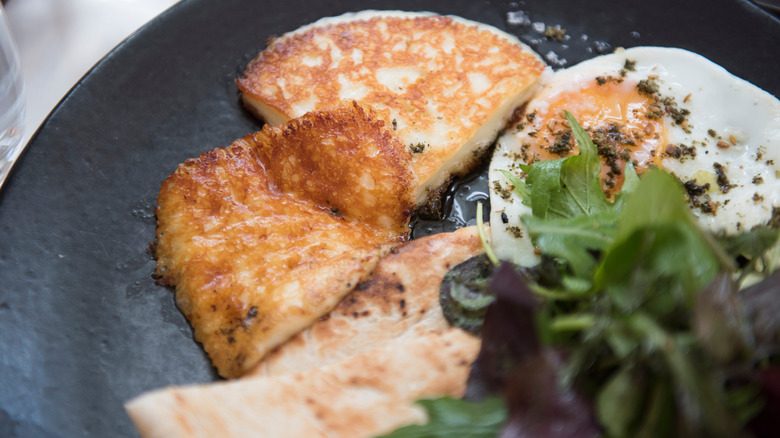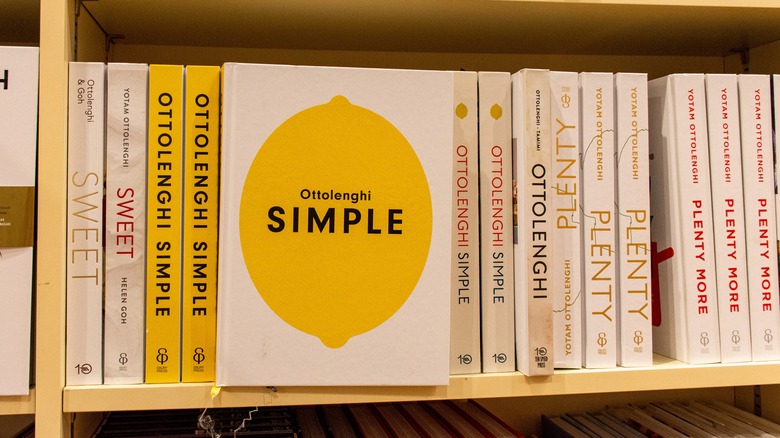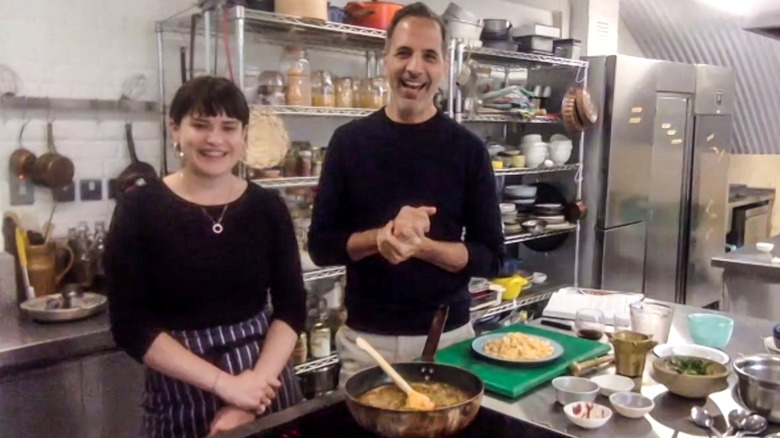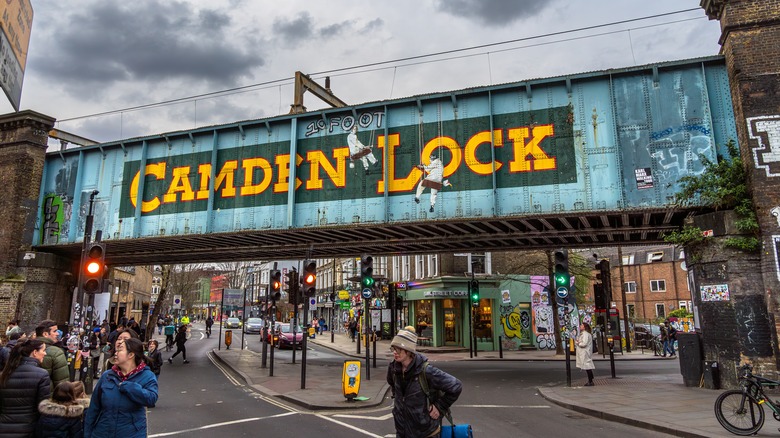Who Is Yotam Ottolenghi And Why Is He So Famous?
If you're into food and cooking, you've probably heard the name Yotam Ottolenghi. Maybe you've known about him for years or perhaps he's newly on your radar. Either way, it might seem like the name just seeped into your consciousness and you're not sure why. You might be wondering, who is Yotam Ottolenghi and why is he so famous?
This chef and cookbook author has been on the scene since the early 2000s. He has his rabid fans, but there are also plenty of folks out there who might have seen his name on a cookbook or in a newspaper column and don't know much beyond that. If you're unsure what Ottolenghi is famous for, you've come to the right place.
We're about to do a deep dive into this popular chef's backstory, including how he got into cooking and how he became famous for his food. His recipes are iconic for a reason, so you might be about to gain a new obsession.
Yotam Ottolenghi was born and raised in Israel
First off, you might be wondering about Yotam Ottolenghi's background. It can get confusing. He works out of the U.K. but he has an Italian surname and he's known for his work with Middle Eastern flavors. So, what gives?
Well, the chef was born and raised in Israel. He was born in Jerusalem in 1968. Both his parents were Jewish, but from different European heritages. His mother came from a German background, while his father came from an Italian background, hence the Italian surname.
His interest in food dates all the way back to his youth. "I have a lot of childhood memories around food. Actually all my childhood memories are around food," he said in an interview with Lindsay Magazine. It's doubtless that where he grew up had an impact on the ways that he cooks and the kinds of foods and flavors he chooses to work with.
Traveling in his youth and parents who were excellent cooks served as culinary inspiration
Every great chef's journey starts somewhere and it seems that a combination of travel and his parents' interest in food set him off in the right direction. Both his parents were great cooks and, because of their European heritages, cooked various types of cuisine, rather than just Jewish or Israeli cuisine.
His father would cook Italian foods, such as pasta and polenta, while his mother would whip up German favorites, like potato and cabbage dishes. However, she was also an adventurous cook and liked to make international dishes, so Ottolenghi grew up experiencing a wide range of dishes and flavors.
He also traveled as a child, spending summers in Tuscany, where his family would feast on all the bread, cheeses, and cold cuts Italy had to offer. Then, when he was back home in Jerusalem, the food in the markets had a Middle Eastern bent, with ingredients like za'atar, tahini, and cardamom were commonplace. This has clearly inspired his cooking style, and is one of the reasons why ingredients like black limes and pomegranate molasses often find their way into his recipes.
Yotam Ottolenghi learned to cook when he was at university
Despite loving food as a child, Yotam Ottolenghi didn't really begin cooking until he was in university. When he was younger, his parents had always taken the reins in the kitchen. So, he didn't need to learn to cook until he was living independently. And, that's when he started to get interested.
"I was very interested in food, but I didn't cook much when I was young. It was later on I started experimenting," he remarked in an interview with Emma Higginbotham. He attended university in Tel Aviv, where he lived near a market that sold fresh fruits and vegetables. He became obsessed with this fresh produce and started to learn more about it. He would ask questions at the market and read about cooking, and gradually learned to cook this way.
While some chefs seem to begin cooking from an early age, Ottolenghi started with a love of food and didn't transform this into practical cooking skills until later. Still, once he did, he seemed to fall in love with the craft and he hasn't looked back.
Yotam Ottolenghi attend the Le Cordon Bleu cooking school in London
At University in Tel Aviv, Yotam Ottolenghi completed a Masters in philosophy and literature. He was planning to move to the U.S. to work toward a PhD and potentially go into a life in academia, but life had other plans for him. In 1997, when he was done with his Masters degree, his then-boyfriend, Noam Bar, moved to London to study business. Ottolenghi moved with him, intending to just take a year out.
However, while he was living in London, he signed up for Le Cordon Bleu cookery school. This is a prestigious cooking academy in the Marylebone area of London, focusing on French cuisine. It's unclear if at the time, Ottolenghi was planning to make a career out of cooking or just intending to fill his time while living in London. Either way, this will have been where he truly learned the core of his craft, which he could build off to become the chef he is today.
After his training, Yotam Ottolenghi worked in restaurants, bakeries, and cafes around London
After he graduated from Le Cordon Bleu, Yotam Ottolenghi began his culinary career in earnest, opting to stay in London with his partner. His first job was as a pastry chef at the restaurant Capital in the fashionable London suburb of Knightsbridge. Of his early years in the kitchen, Ottolenghi has said it was extremely hard work. It's especially hard being a new chef and at the bottom of the pecking order. The hours are long, it's hot in the kitchen, and you get the worst kitchen tasks handed to you as a newcomer.
However, Ottolenghi soon started to receive positive feedback about his cooking, and this spurred him on. It wasn't long before he moved to Baker & Spice — an eatery that's part cafe, part deli, and part restaurant — to become the head pastry chef there. It was there that he met Sami Tamimi, who would become an important part of the Ottolenghi empire.
Tamimi was working as a chef at Baker & Spice, although in a different department to Ottolenghi, putting together savory dishes. The two of them were born in the same year and grew up in Jerusalem, although Tamimi is an Arab-Israeli. They bonded, in part thanks to having a shared language and coming from the same place, but also because they were equally baffled by traditional English food. The pair became best friends and this played a part in Ottolenghi's next move.
In 2002, he opened gourmet deli Ottolenghi in Notting Hill with business partner Sami Tamimi
Yotam Ottolenghi had been working at Baker & Spice for a few years when he decided to open his own business. It actually wasn't his idea but that of Noam Bar, who by this time was Ottolenghi's ex-boyfriend. Bar suggested that Ottolenghi open his own place and at first he was skeptical. Sure, it's every chef's dream, but Ottolenghi described himself as risk-averse and said it sounded too scary.
However, he was eventually won over to the idea and, in 2002, Ottolenghi opened in Notting Hill. Despite the name, it wasn't just Ottolenghi's venture. He asked his good friend Sami Tamimi to go into partnership with him. Tamimi took on the savory food, while Ottolenghi took the lead on cakes and pastries. Plus, Bar came on board as an investor and business partner. The original Ottolenghi location was primarily a deli, bakery, and food shop. People could buy baked goods, salads, and dips to go. It was a small space with no seating. And, when it first opened up, many people thought it was a florist because of its displays of flowers in the window. It wasn't long before it made a name for itself, however.
Ottolenghi became famous for its vegetable-forward dishes with a focus on Middle Eastern and Mediterranean cuisine
Before long, there was buzz around Ottolenghi. The deli became well-known in London and beyond for its use of Middle Eastern and Mediterranean flavors. Today, you probably know what dukkah is, and have jars of tahini and pomegranate molasses in your pantry. But back in London in the early 2000s, these were still fairly unusual ingredients. The upmarket food scene was full of more classic British fare, so Ottolenghi was shaking things up a bit.
The other thing that got people talking was the fact the restaurant centered vegetables. For so long, vegetables and legumes had been relegated to second best, but at Ottolenghi, they were given a starring role. It's quite usual in Middle Eastern and Mediterranean cuisines to have vegetable dishes that stand out on their own merit, so it wasn't anything new in global terms, but London's food scene was ready for it.
Ottolenghi's dishes were also just delicious, which helped make it famous. If you know anything about Yotam Ottolenghi's cooking, he doesn't exactly keep it simple. For instance, Yotam Ottolenghi's idea of a simple lunch is an elevated beans on toast that includes home-pickled red onions and green chiles, ginger, garlic, curry powder, chili flakes, and cumin seeds, cream, cheese, and cilantro. And that's a pretty short ingredient list, as far as his recipes go.
The Ottolenghi brand expanded with more delis and restaurants
After the success of the first deli, Yotam Ottolenghi opened his next Ottolenghi location in Islington in 2006. This was a restaurant as well as a deli, giving his chef and his business partner Sami Tamimi a chance to expand the kinds of dishes they could offer. As well as selling the kinds of quick bites customers could take away, this location also served more sit-in options for breakfast, lunch, and dinner. This was clearly a success, because Ottolenghi started expanding around the capital, and eventually beyond.
There are currently seven branches of Ottolenghi — six around London and one at popular designer shopping outlet Bicester Village. Four of these are restaurants and delis, while three are just delis. In addition to this, London has two restaurants that are part of the Ottolenghi canon, ROVI and NOPI. ROVI focuses on vegetables, particularly on fermentation and cooking over fire. NOPI is a celebration of flavors from around the globe. It's a venture that will likely expand even further over time.
Yotam Ottolenghi writes columns for The Guardian and The New York Times
So, now you know a little about Yotam Ottolenghi as a chef and restaurateur. But plenty of people own popular restaurants without becoming household names. How is Ottolenghi different? Well, one of the places you might recognize his name is from his newspaper columns. These feature recipes and general insight about life, food, and cooking.
Ottolenghi started writing a weekly column for British newspaper The Guardian way back in 2006. It was called The New Vegetarian (despite Ottolenghi not being veggie himself), and featured vegetable-forward dishes. The New Vegetarian is no longer going as a column, eventually making way for Meera Sodha's column, The New Vegan, but Ottolenghi is still a regular Guardian contributor. At present, he writes the Ask Ottolenghi column, as well as regularly contributing recipes.
He also writes a monthly column for The New York Times. He's an Eat columnist for The New York Times Magazine, contributing tips and recipes. If you're a NYT reader, this might be where you've heard his name.
Yotam Ottolenghi has written numerous popular cookbooks
In addition to his restaurants and newspaper columns, Yotam Ottolenghi is known for his cookbooks. In fact, these might be his best-known work. Ottolenghi has opinions on everything from the best way to cook potatoes to how to prepare chickpeas for making hummus, so it's no surprise he went into the cookbook game to help teach people new culinary skills. He's currently the author or co-author of 11 cookbooks, ranging from those that feature easy recipes (at least by Ottolenghi standards) to those with in-depth, restaurant-quality dishes.
His first cookbook was released in 2008 and simply called "Ottolenghi." It was written with Sami Tamimi, his business partner and co-chef in his delis and restaurants. It was full of bold flavor combinations and inventive recipes, showcasing some of the dishes served at the pair's deli. The next title he released was "Plenty" in 2010. This was a vegetable-forward book, showing home cooks how to make simple ingredients — like eggplant and green beans — shine. Since then, he's released another nine titles, including "Simple" and "Shelf Love," both of which feature quicker and easier recipes than Ottolenghi is usually known for. While his recipes are much-loved, they're often playfully criticized for being complicated, with excessively long ingredient lists.
He has starred in several cooking shows in the U.K.
If his cookbooks and restaurant career weren't enough to propel Yotam Ottolenghi to fame, his foray into television may have done the job. Although they may not have had much airtime outside of the U.K., Ottolenghi starred in three British food and cooking shows.
"Jerusalem on a Plate" was part travel show, part cooking show. He traveled to his hometown of Jerusalem to explore local flavors and recipes. He visited the homes of Jewish Israelis and Arab Israelis to discover family recipes; he ate street food from around the city; and he tried dishes from trail-blazing chefs.
He also made "Ottolenghi's Mediterranean Feast" and a follow-up, "Ottolenghi's Mediterranean Island Feast." In these shows, he traveled around the Mediterranean, sampling local recipes and coming up with his own inspired by the regions' cuisines.
On top of this, he's acted as a guest judge on "MasterChef Australia." Although he generally doesn't like cooking competitions, he believes that this one is particularly supportive and nurturing of cooking talent.
Yotam Ottolenghi lives in Camden, London with his husband and two children
Beyond his cooking career, you might be wondering what Yotam Ottolenghi is up to now. Well, he still lives in London, which is where his two restaurants are. He has a home in the North London borough of Camden, which he shares with his husband, Karl Allen, and their two sons, Max and Flynn. Max was born in 2013 and Flynn in 2015, both via gestational surrogacy.
Ottolenghi is often busy with long days at his restaurants or in his test kitchen and Allen is the kids' primary caregiver. However, Ottolenghi says that the children played a role in his recipes becoming more simple over the years. Now, his recipes might be complicated by many people's standards, but they're meant for easy weeknight meals. He still has thoughts and feelings about how to fry falafel and he's not about to serve up mac and cheese from a box, but his recipes have gotten more basic. This is partly down to having to adjust to his kids' palates and realizing not every dish needs 21 ingredients.
Yotam Ottolenghi is famous for his bestselling cookbooks, as well as his delis and restaurants
Let's get to the crux of the matter — why is Yotam Ottolenghi so famous? Well, perhaps the biggest reason for his fame is his cookbooks. His books have sold more than 5 million copies worldwide and over 1.5 million in America. That's a lot of households cooking Ottolenghi recipes — which are widely praised for being colorful, flavorful, and easy to follow (for instance, he often suggests finishing a dish with herbs, but offers substitutions based on the ingredients that might be fresh, seasonal, or easily available where you are). Aside from that, there's not just one thing that has made him a household name, it's a collection of reasons.
Of course, he's known for his London restaurants and delis. These are popular spots in the British capital, drawing in locals and tourists alike. As mentioned, he's also written columns for popular newspapers and appeared on TV. All this combined has made Ottolenghi a name that most food-lovers recognize, even if they wouldn't recognize him on the street. He's responsible for a shift in food culture and is probably a big part of the reason why you can pick up preserved lemons and harissa in most supermarkets.
